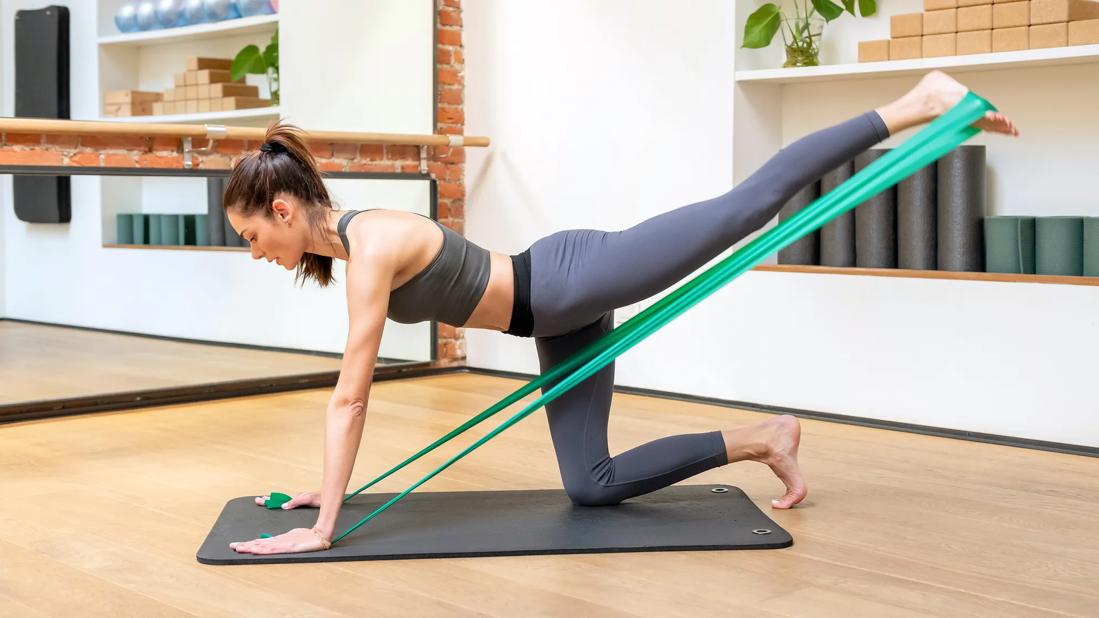Weightlifting and other types of resistance training bring many health benefits

What do you envision when you hear the words strength training? Barbells and weight plates, the heavy-duty tools of those who pump iron at the gym, probably come to mind immediately.
Advertisement
Cleveland Clinic is a non-profit academic medical center. Advertising on our site helps support our mission. We do not endorse non-Cleveland Clinic products or services. Policy
But that form of strength training (or resistance training) is just one way to build muscle. In truth, you don’t have to lift weights to grow stronger. You’ve got other exercise options — including some that require NO equipment.
Let’s work out the details with exercise physiologist Katie Lawton, MEd, and athletic trainer Tom Iannetta, ATC, CSCS.
Strength training is a type of exercise where your muscles work against some form of resistance. The activity “loads” muscles by forcing them to overcome, resist or control an opposing force.
Think about doing a basic bench press, to use a classic weightlifting example:
“At each step, you’re applying a stimulus to make your muscles work,” explains Lawton. “As you do this, your muscles grow stronger and adapt to meet the demands that you’re putting on them.”
On the flip side, ignoring strength-building activities comes at a cost. If you don’t regularly work your muscles, they tend to lose mass and weaken, especially as you age.
Advertisement
Health and fitness guidelines generally recommend devoting two workouts a week to full-body strength training. (That can be spread out over more days, too, with specialized workouts focused on your upper body and lower body.)
Strength-training workouts typically last 30 minutes to an hour. Here’s how you can spend that time.
To state the obvious, lifting heavy things builds muscle. A free-weight workout could include testing your upper and lower body muscles with equipment like:
Stabilizing free weights as you move them around during exercise places extra demands on muscles while also activating more muscle groups. “You get a big payoff from free weights,” says Lawton.
Weightlifting machines feature systems of pulleys, wheels and levers to help you lift weights. They essentially use engineering to help you move pounds up, down and around during your workout.
The mechanization allows you to lift weights without worrying about the potential wobble that comes when you try to hold free weights steady.
“Utilizing weightlifting machines may be a safer alternative for someone who is just beginning a weight training program,” says Iannetta.
So, are weightlifting machines better, worse or the same as free weights? Well, that’s a big point of debate within the fitness world. Bottom line? Research shows both are beneficial, and the choice often comes down to personal preference.
Don’t be fooled by the look of resistance bands. Stretching those oversized rubber bands works your muscles just like using free weights or weightlifting machines and offers similar strength gains while being easier on your joints.
“Resistance bands are versatile, effective and great for all fitness levels,” notes Iannetta.
In comparison to other strength-training equipment, resistance bands are portable, versatile and less expensive, too.
You don’t need equipment for a strength-training session. You just need … well, yourself. That’s because body weight exercises use only your body mass and gravity as resistance to build strength.
Examples of body weight exercises that qualify as strength training include:
“Body weight exercises might seem simple, but they’ll work your muscles pretty hard,” says Lawton. “Small-scale studies show they can deliver the same benefits as lifting traditional weights.”
Suspension training is another type of body weight workout, although it requires a system of straps and other equipment to elevate you above the floor.
No matter what form of strength training you choose, your body will see benefits. Here are 10 ways it makes you healthier, stronger and better equipped to handle the physical demands of daily life.
Advertisement
Advertisement
Advertisement
Learn more about our editorial process.
Advertisement

You can improve your athletic performance over time by breaking up your workout regimen into focused cycles

Lower-intensity workouts can deliver high-quality health and fitness results

Incremental changes in your exercise routine can improve your strength and endurance over time

Understanding heart rate zones can help you tailor your workout to reach your goals

Increase the size of your muscles by bulking up on protein and focusing on slow, intense movements with progressive overloading

Low-impact exercises help you recover faster between sets, during cool downs and on rest days

Eccentric is slow and steady, while concentric is fast and controlled

Weightlifting can help you build muscle mass, reduce joint pain and increase flexibility to improve your quality of life

The best parenting style balances enforcing rules and showing plenty of love

Tips include cutting back on sugar, focusing on exercise and managing stress

It can be harder to let go when you’ve invested time, energy and emotions — but it might be the healthier choice long term